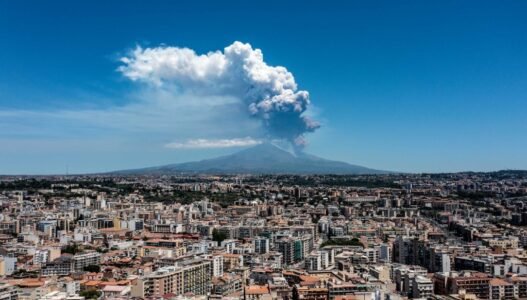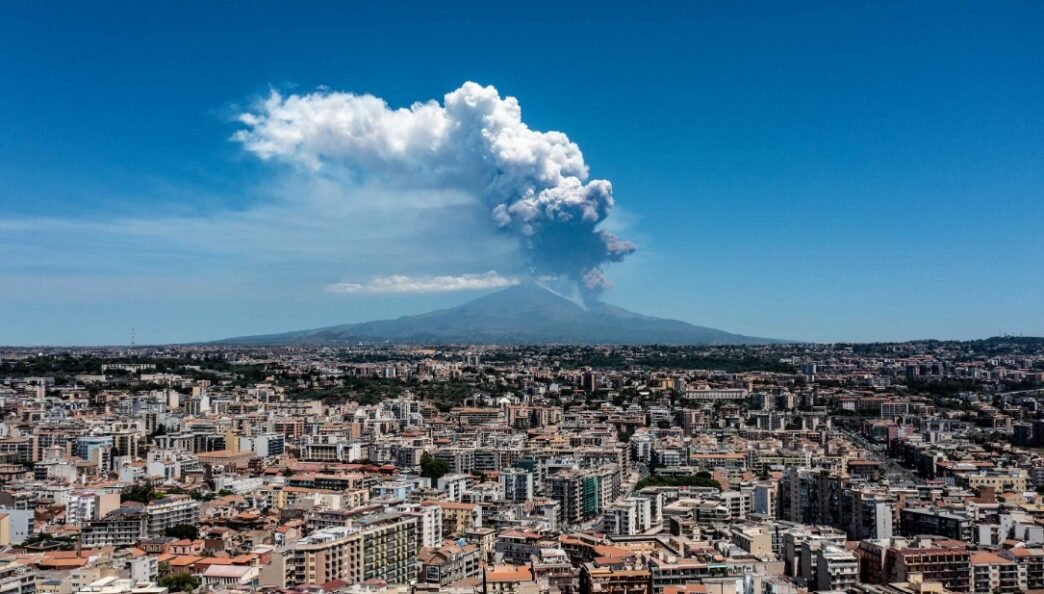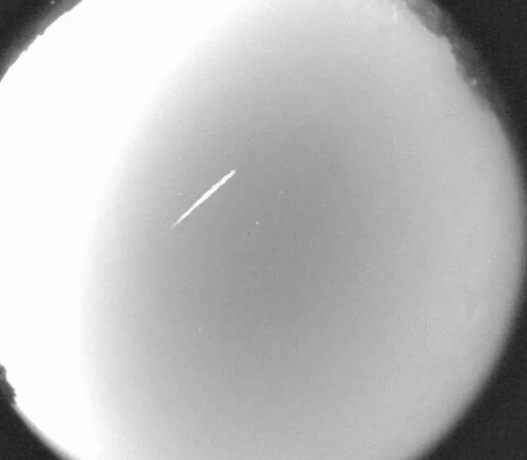Italy’s Most Active Volcano Spews Ash and Lava Skyward
Italy’s Mount Etna erupted once again early Monday, sending a massive plume of volcanic debris into the sky and forcing tourists to flee. Stunning images and videos shared online show visitors on guided hikes running for safety as the volcano burst into life.
According to Italy’s National Institute of Geophysics and Volcanology (INGV), the eruption quickly evolved into a “lava fountain”, a dramatic display of molten rock, ash, and volcanic gas. The agency explained that a pyroclastic flow—an extremely hot and fast-moving mixture of ash, rock fragments, and gas—was likely triggered by a collapse on the northern side of the Southeast Crater.
Mount Etna’s History of Activity
Situated on Sicily’s eastern coast between the cities of Messina and Catania, Mount Etna stands at roughly 10,900 feet. It’s Europe’s tallest and most active volcano, frequently erupting for centuries. The name “Etna” originates from the Greek word “Aitne,” which translates to “I burn.”
Despite its frequent activity, Etna’s lava hasn’t posed a serious threat to nearby towns since the 1800s. However, it continues to impact tourism and travel. Last year, it erupted twice, leading to temporary shutdowns at Catania Airport due to volcanic ash and poor visibility. In 2021, Etna erupted 11 times in just three weeks.
A Popular Yet Dangerous Tourist Destination
Mount Etna draws around 1.5 million tourists annually, making it a major attraction in Italy. Visitors often trek the volcano on guided tours, hoping to witness its awe-inspiring power—though this week’s eruption reminds us of the risks involved.
The most recent major eruption before this event occurred on February 11, highlighting the volcano’s unpredictable nature.
For more global updates and breaking news, visit our homepage at 1stnews24.com.





















